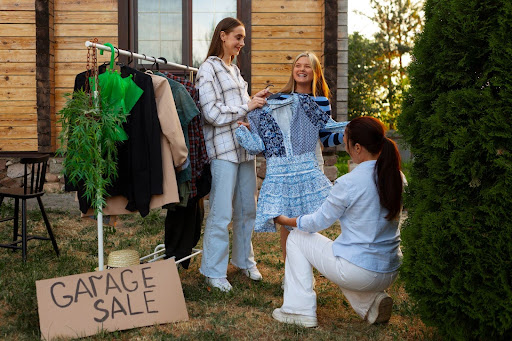Outdoor marketing is most effective when it resonates with consumers’ current needs and behaviors, making seasonal trends a powerful tool for marketers. Whether it’s spring’s energy, summer’s vibrancy, fall’s nostalgia, or winter’s warmth, each season presents unique opportunities to tailor campaigns that capture attention and drive engagement. Aligning your outdoor marketing strategy with these seasonal shifts allows you to connect more deeply with your audience and ensure your message stays relevant throughout the year.
By understanding how seasons influence consumer behavior, brands can craft campaigns that not only stand out but also foster emotional connections with their target audience. This article explores the importance of leveraging seasonal trends in outdoor marketing, offers actionable strategies for each season, and highlights tools and techniques to optimize your approach.
Why Seasonal Trends Matter in Outdoor Marketing
Seasonal trends profoundly impact consumer behavior, shaping purchasing decisions, activities, and emotional responses. In outdoor marketing, aligning campaigns with these trends ensures that your message resonates with the audience’s current mindset and needs. For example, as the weather warms in spring, people are drawn outdoors, creating opportunities for campaigns focused on renewal, outdoor activities, or seasonal events. Similarly, winter campaigns can leverage holiday excitement and themes of warmth and comfort to connect with consumers.
By tapping into the emotional and practical aspects of each season, outdoor marketing can foster a stronger connection between brands and their target audiences. Seasonal relevance not only increases engagement but also positions your brand as attuned to your customers’ lives, making your message more impactful and memorable.
Key Seasonal Strategies for Outdoor Campaigns
Adapting your outdoor marketing campaigns to align with seasonal trends ensures they remain relevant and engaging year-round. Here are strategies tailored to each season:
- Spring: Highlight themes of renewal, growth, and outdoor activities. Use vibrant colors and fresh imagery to reflect the energy of the season. Campaigns promoting gardening, fitness, or travel resonate well as people embrace the outdoors after winter.
- Summer: Focus on travel, festivals, and outdoor fun. Bold visuals and high-energy messages work best during this season. Campaigns for beverages, outdoor gear, and experiences like concerts or vacations thrive in summer’s lively atmosphere.
- Fall: Emphasize back-to-school, harvest themes, and cozy vibes. Warm tones and nostalgic imagery can create emotional connections. Campaigns tied to home improvement, school supplies, and seasonal foods perform well in the autumn months.
- Winter: Leverage the holiday spirit, warmth, and New Year’s resolutions. Bright, festive designs and emotionally uplifting messages capture attention. Winter campaigns can focus on gifts, comfort products, and fitness goals for the upcoming year.
By tailoring your approach to each season’s unique characteristics, you can create campaigns that not only stand out but also foster deeper connections with your audience.
Overcoming Challenges in Seasonal Outdoor Marketing
While seasonal marketing offers excellent opportunities, it also comes with its own set of challenges. For one, timing is critical—launching a campaign too early or too late can diminish its impact. For instance, holiday-themed ads rolled out too early in the fall may miss their mark, while last-minute campaigns might struggle to stand out amidst the seasonal rush. Careful planning and scheduling are essential to ensure your message reaches the audience at the right moment.
Weather unpredictability is another hurdle, particularly for outdoor marketing. A sudden shift in weather can affect the visibility or effectiveness of billboards, posters, or events. Investing in weather-responsive technology, like digital billboards that adapt content based on current conditions, can help mitigate this issue and keep campaigns relevant.
Finally, some seasons naturally attract more marketing activity, leading to high competition for consumer attention. To stand out, your campaign needs a strong creative angle and a clear call to action. During quieter periods, focus on maintaining brand presence with evergreen messaging that ties into subtle seasonal cues without overwhelming your audience. By addressing these challenges proactively, you can execute seasonal campaigns that remain impactful and flexible.
Tools and Techniques for Seasonal Outdoor Marketing
Harnessing the right tools and techniques is essential for creating impactful seasonal outdoor marketing campaigns. One of the most valuable tools is data and analytics, which can help identify seasonal trends and consumer behaviors. By analyzing past campaign performance and industry insights, you can anticipate audience needs and preferences for upcoming seasons, ensuring your messaging stays relevant and targeted.
Incorporating technology like weather-responsive digital billboards can add a dynamic edge to your campaigns. These billboards allow content to change based on real-time weather conditions, such as promoting cold beverages on hot days or cozy apparel during a snowstorm. Such adaptability ensures your campaigns remain contextually relevant and engaging.
Another key strategy is tailoring visuals, messaging, and calls to action for each season. Bright, cheerful designs work well in spring and summer, while warm, comforting imagery resonates in fall and winter. Pairing this with clear, season-specific calls to action—like “Plan Your Summer Getaway” or “Shop Cozy Winter Essentials”—can drive stronger consumer responses.
By leveraging these tools and techniques, you can create campaigns that align with seasonal trends and stand out in a crowded market.
Conclusion
Seasonal trends offer a strong framework for outdoor marketing, allowing brands to connect with their audience in meaningful and timely ways. By aligning campaigns with the unique characteristics of each season—whether it’s spring’s energy, summer’s vibrancy, fall’s nostalgia, or winter’s warmth—you can create marketing messages that resonate deeply and stand out in a competitive market.
While challenges like timing, competition, and unpredictable weather can pose obstacles, proactive planning and the use of tools like data analytics and weather-responsive technology can ensure your campaigns remain effective and adaptable. With a creative approach and a clear understanding of seasonal consumer behaviors, your outdoor marketing efforts can deliver year-round impact, fostering engagement, brand loyalty, and long-term success.








































